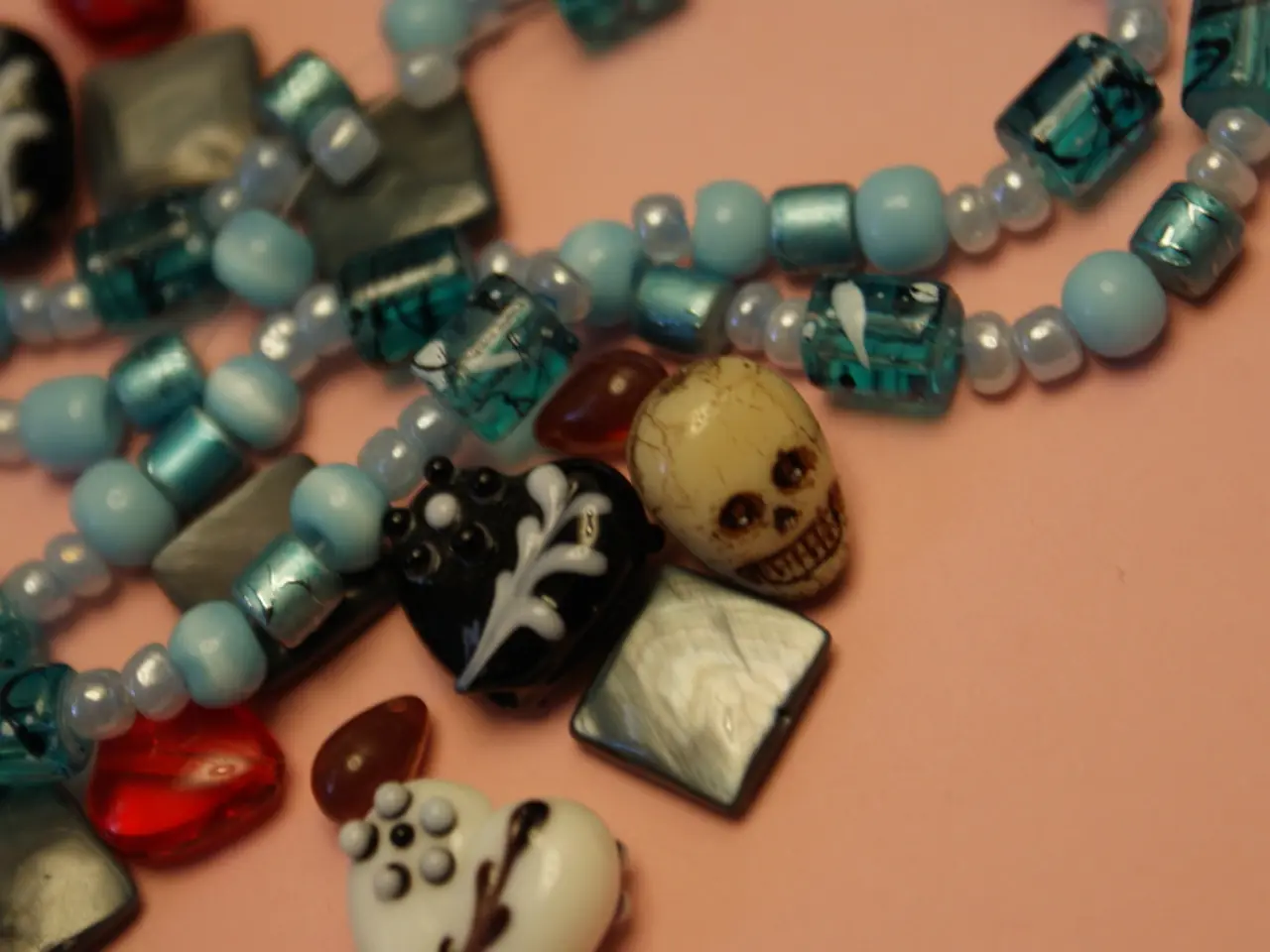Mourning Jewelry: A Historical Overview, Categories, and Contemporary Resurgence
Mourning jewelry, a poignant and intricate art form deeply rooted in the cultural practices of grief, remembrance, and symbolism, has a rich history that spans centuries. This fascinating tradition, which reached its zenith during the Victorian era, has evolved significantly through significant historical periods and social customs.
### Ancient and Renaissance Beginnings
The tradition of wearing jewelry to remember loved ones dates back to ancient times. In the 16th century, notable figures like Mary, Queen of Scots used jewelry with explicit mourning or sentimental meaning. Mary is known to have sent a *memento mori* ring containing her hair as a symbol of love and remembrance during a period of separation, indicating the early use of mourning jewelry to express affection and memory[3].
### Victorian Era - The Golden Age
Mourning jewelry reached its peak significance during the Victorian era (1837-1901), influenced greatly by Queen Victoria’s prolonged mourning after Prince Albert's death. This period saw mourning become a socially codified practice where black jewelry, especially **Whitby Jet**, became popular. Whitby Jet's deep black color symbolized mourning, and its lightweight, carvable nature made it ideal for intricate pieces like brooches, pendants, and bracelets. These often included symbolic motifs such as crosses, urns, or weeping willows, and were personalized with names, dates, or locks of hair of the deceased, blending personal grief with artistic expression[1][4].
### Symbolism in Motifs
Beyond the black color, certain symbols carried layered meanings in mourning jewelry. For example, snakes were popular motifs symbolizing the eternal cycle of life, death, and rebirth, underscoring themes of transformation and eternal life in mourning pieces[5].
### Significance of Mourning Jewelry
Mourning jewelry served as tangible reminders of lost loved ones, allowing the wearer to carry their memory in daily life. The personalization of pieces with hair or inscriptions made the grief publicly visible yet intimately personal. In eras like the Victorian period, mourning jewelry was a social norm, a visible expression of respect and adherence to mourning protocols. Wearing such jewelry communicated status, empathy, and the wearer’s connection to the deceased[2].
### Modern Interpretations and Collecting
In modern times, mourning jewelry has undergone a revival, with contemporary interpretations incorporating cremation jewelry containing ashes, fingerprint-engraved pieces, and memorial diamonds created from carbon extracted from cremated remains. Collecting antique mourning jewelry has grown in popularity among those fascinated by its historical significance, craftsmanship, and emotional resonance. Major museum collections, such as the Victoria and Albert Museum in London and the Metropolitan Museum of Art in New York, offer excellent references for collectors seeking to educate themselves about period-appropriate styles, materials, and construction techniques[6].
In summary, mourning jewelry reflects a long tradition of commemorating the dead, evolving through historical periods to incorporate personal grief, cultural symbolism, and social customs. Its significance lies in its ability to transform sorrow into meaningful remembrance through art and symbolism[1][3][4][5].
References:
[1] Victoria and Albert Museum. (n.d.). Mourning Jewellery. Retrieved from https://www.vam.ac.uk/articles/mourning-jewellery
[2] The Metropolitan Museum of Art. (n.d.). Mourning Jewelry. Retrieved from https://www.metmuseum.org/toah/hd/mjew/hd_mjew.htm
[3] The British Library. (n.d.). Memento Mori. Retrieved from https://www.bl.uk/collection-items/memento-mori-ring
[4] The National Trust. (n.d.). Mourning Jewellery. Retrieved from https://www.nationaltrust.org.uk/features/mourning-jewellery
[5] The National Museum of Scotland. (n.d.). Memento Mori. Retrieved from https://www.nms.ac.uk/explore-our-collections/themes/death/memento-mori/
[6] The Telegraph. (2019, October 24). How to Collect Mourning Jewellery. Retrieved from https://www.telegraph.co.uk/lifestyle/10417341/How-to-collect-mourning-jewellery.html
- The tradition of wearing jewelry to remember loved ones can be traced back to ancient times, with notable figures like Mary, Queen of Scots using jewelry with explicit sentimental meanings.
- Mourning jewelry, with its extensive history dating back centuries, saw significant evolution during the Victorian era, embodying a poignant blend of art, symbolism, and social norms.
- Exhibiting a fascination with fashion-and-beauty and home-and-garden items, today's collectors seek out antique mourning jewelry for its historical significance, craftsmanship, and emotional resonance, like that found in the Victoria and Albert Museum in London and the Metropolitan Museum of Art in New York.
- Symbolizing theimportance of personal growth, many modern interpretations of mourning jewelry incorporate educational elements, such as cremation jewelry containing ashes, fingerprint-engraved pieces, and memorial diamonds created from carbon extracted from cremated remains.
- The tradition of wearing jewelry to honor lost pets has parallels with mourning jewelry, offering comfort to pet owners during difficult times.
- Traveling through different regions and cultures provides opportunities to learn about unique local mourning jewelry practices and broaden our understanding of this remarkable art form.




